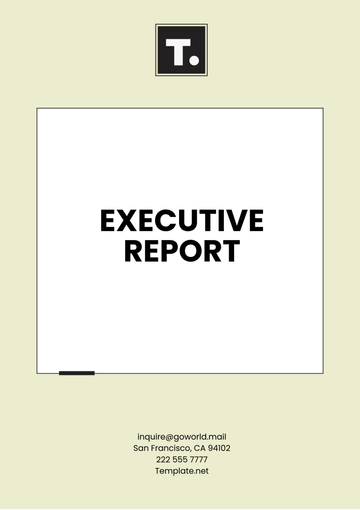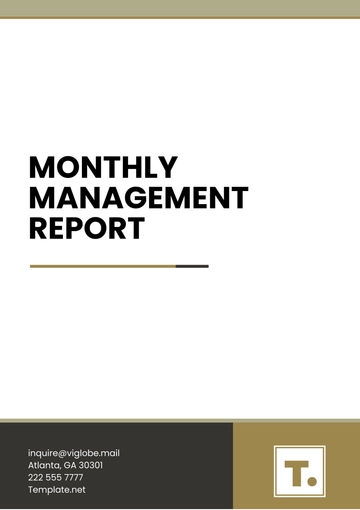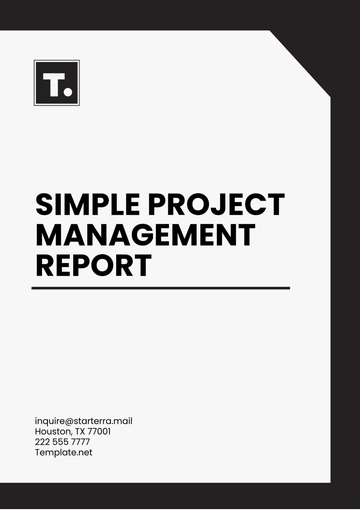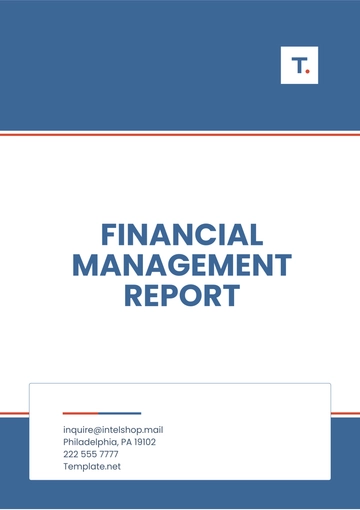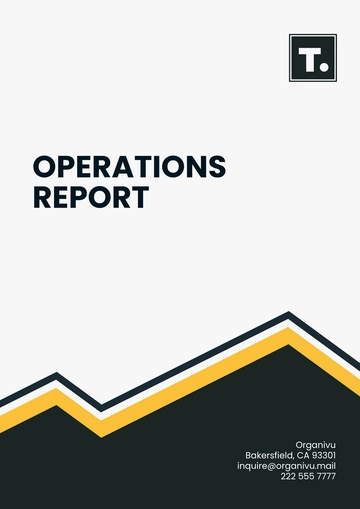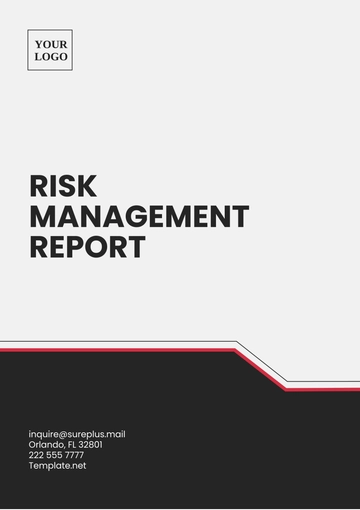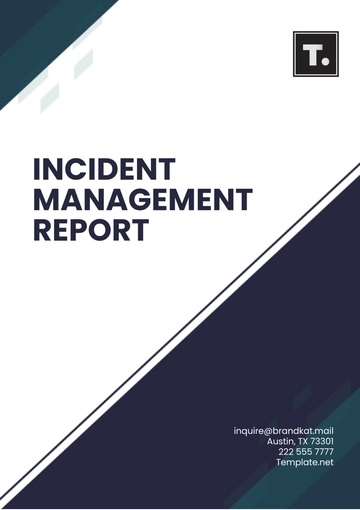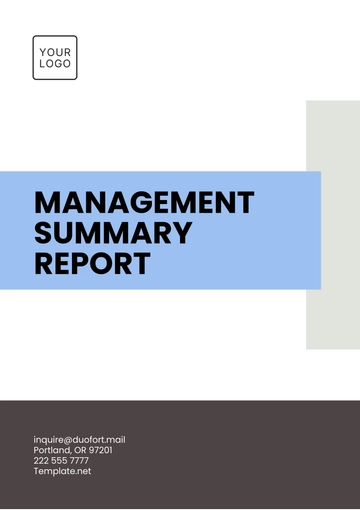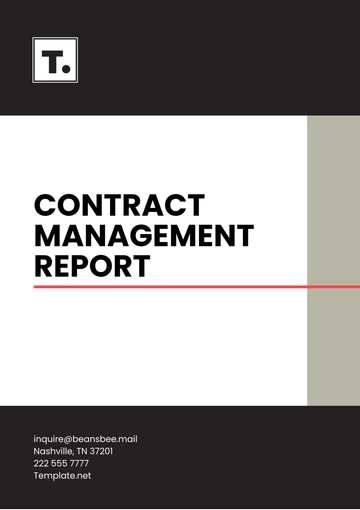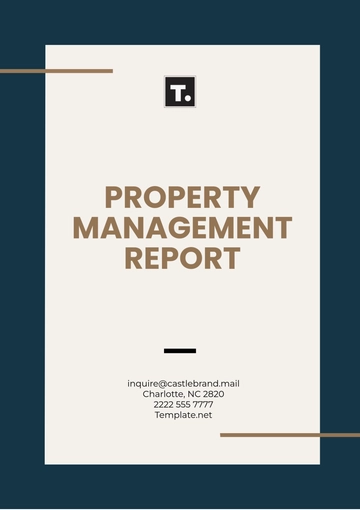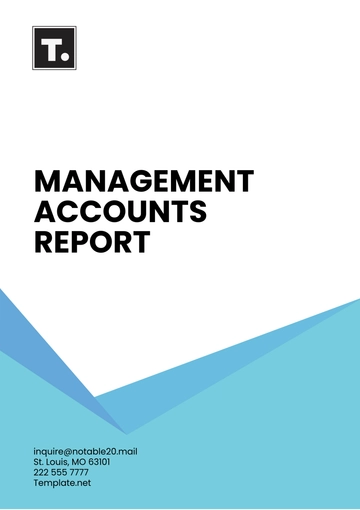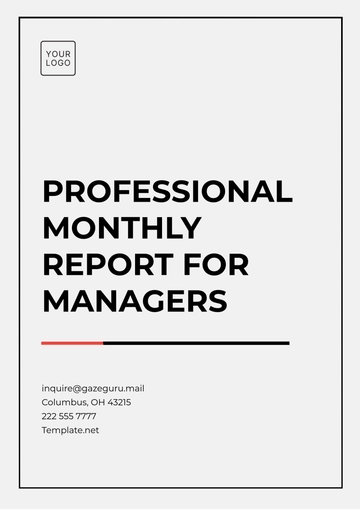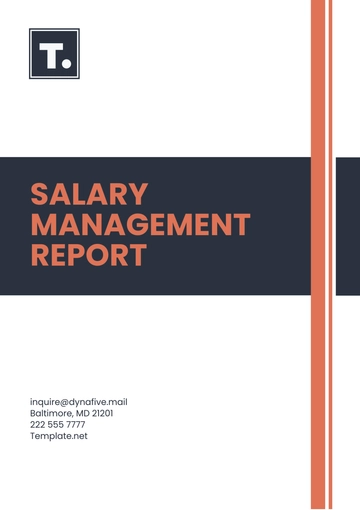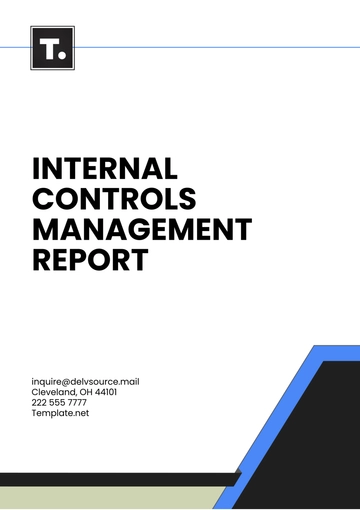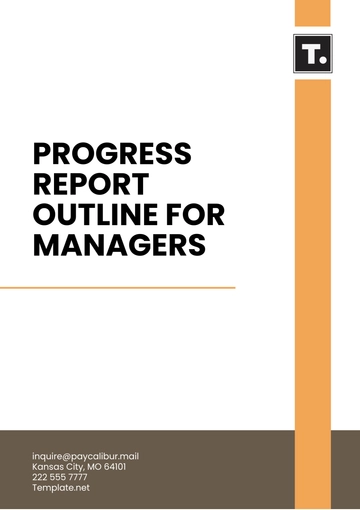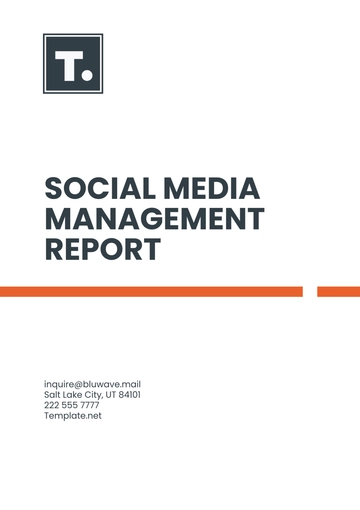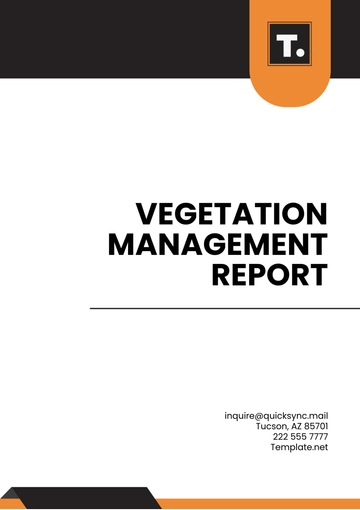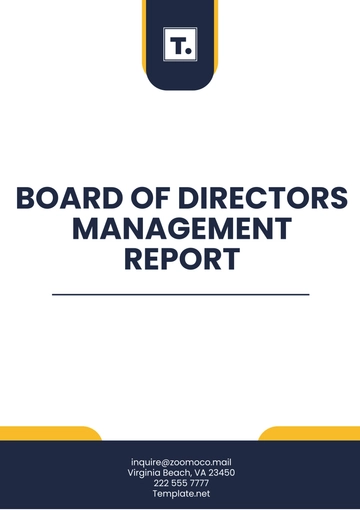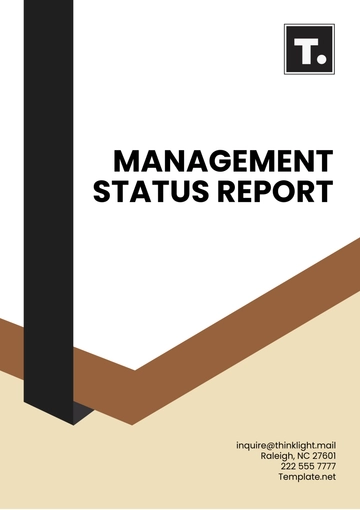Free Administration Vendor Negotiation Strategy Report
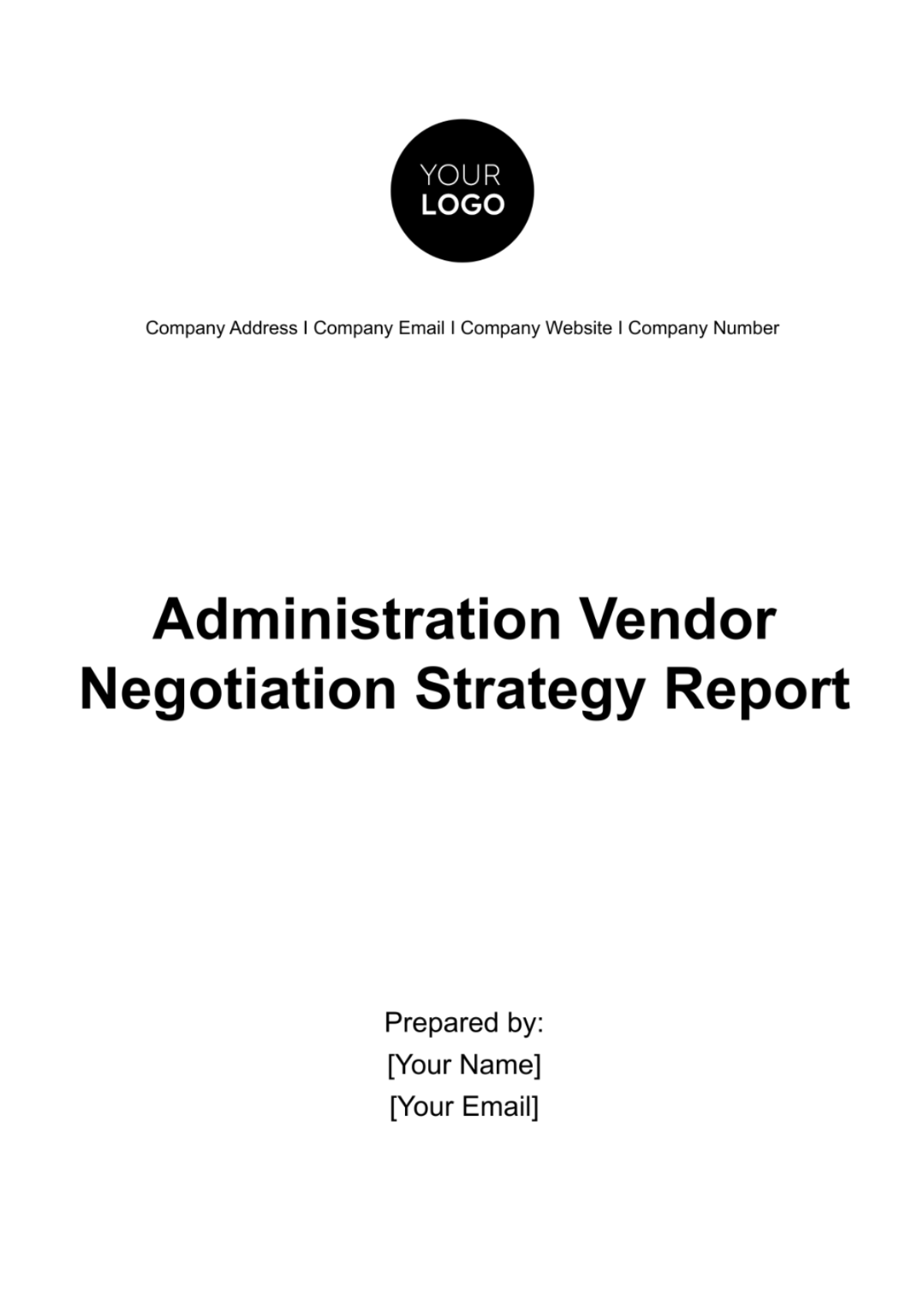
This report outlines a comprehensive vendor negotiation strategy aimed at maximizing value, minimizing costs, and optimizing supplier relationships for our organization. By employing strategic negotiation tactics, leveraging data-driven insights, and fostering collaborative partnerships, we can achieve favorable terms, mitigate risks, and drive operational excellence across our procurement process.
Effective vendor negotiation is essential for achieving cost savings, securing favorable terms, and maintaining competitive advantage in today's dynamic marketplace. This report provides a structured approach to vendor negotiation, encompassing pre-negotiation preparation, negotiation tactics, and post-negotiation follow-up, to help our organization achieve its procurement objectives efficiently and effectively.
Objectives
Cost Optimization:
Achieve cost savings through strategic negotiation tactics, including competitive bidding, price benchmarking, and volume discounts.
Implement cost reduction initiatives without compromising quality or service levels, ensuring optimal value for the organization.
Risk Mitigation:
Identify and assess potential risks associated with vendor relationships, contract terms, and market volatility.
Develop risk mitigation strategies to address contractual ambiguities, supplier reliability issues, geopolitical risks, and supply chain disruptions.
Value Maximization:
Enhance value by negotiating additional benefits, such as extended payment terms, warranty extensions, training programs, or value-added services.
Explore opportunities for innovation, technology transfer, and knowledge sharing to drive long-term value creation and competitive differentiation.
Relationship Building:
Foster collaborative and mutually beneficial relationships with key vendors to promote trust, transparency, and mutual understanding.
Establish strategic partnerships with vendors aligned with our organization's values, goals, and corporate social responsibility initiatives.
Process Efficiency:
Streamline negotiation processes, documentation, and approval workflows to improve efficiency, reduce administrative overhead, and accelerate time-to-contract.
Leverage technology solutions, such as e-procurement platforms, contract management systems, and electronic signature tools, to automate routine tasks and facilitate information sharing.
Pre-Negotiation Preparation
Define Objectives:
Engage key stakeholders to clarify negotiation objectives, priorities, and constraints, ensuring alignment with organizational goals and strategic priorities.
Establish clear, measurable objectives that are specific, achievable, relevant, and time-bound (SMART), providing a framework for assessing negotiation success.
Gather Data:
Collect and analyze relevant data from internal and external sources, including market intelligence reports, industry benchmarks, supplier performance metrics, and historical transactional data.
Utilize data analytics tools and techniques to identify cost drivers, pricing trends, demand patterns, and supplier capabilities, informing negotiation strategies and decision-making.
Assess Risk:
Conduct a comprehensive risk assessment to identify potential threats and vulnerabilities related to vendor relationships, contractual obligations, regulatory compliance, and market dynamics.
Prioritize risks based on likelihood, impact, and mitigating actions required, developing risk management plans to address high-priority issues proactively.
Understand Vendor Position:
Research and analyze vendor capabilities, strengths, weaknesses, and competitive positioning in the marketplace, gaining insights into their pricing strategies, cost structures, and bargaining power.
Evaluate vendor performance history, reputation, customer satisfaction ratings, and industry certifications to assess reliability, quality, and suitability as a strategic partner.
Develop BATNA:
Determine Best Alternative to a Negotiated Agreement (BATNA) by evaluating alternative suppliers, sourcing options, or in-house capabilities available if negotiation efforts fail to reach a satisfactory outcome.
Establish reservation points, walk-away criteria, and negotiation boundaries to guide decision-making and leverage during negotiations, maximizing bargaining power and flexibility.
Key Vendor Negotiation Strategies
Strategy | Description | Benefit |
|---|---|---|
Market Analysis | Analyze vendors' positioning in the market in order to enter negotiations with a comprehensive understanding of their strengths and weaknesses. | Provides a leverage point during price and terms negotiations. |
Preparation and Planning | Assess the company's needs in-depth and establish clear goals before entering negotiations. | Helps prevent oversights, improves negotiation structure and aids in achieving objectives. |
Clear Communication | Clearly communicate company's requirements, expectations and limits. | Helps to avoid misunderstandings, promotes transparency and mutual understanding. |
Building Relationships | Establish strong, positive relationships with vendors, promoting mutual respect and understanding. | Fosters a cooperative negotiation environment and can lead to better discounts and terms. |
Continuous Evaluation | Regularly review and evaluate the vendor performance and the effectiveness of negotiation strategies. | Enables improvement and adaptability, ensures accountability. |
Vendor Negotiation Tactics
Build Rapport:
Establishing a positive and collaborative relationship with the vendor is essential for a successful negotiation. This involves taking the time to understand the vendor's perspective, showing empathy, and actively listening to their concerns. Building rapport can be achieved through informal conversations, sharing common interests, or even engaging in small talk before diving into the negotiation agenda. By creating a friendly and respectful atmosphere, both parties are more likely to be open to finding mutually beneficial solutions.
Focus on Value:
While price is an important aspect of negotiation, focusing solely on cost reduction may overlook other opportunities for value creation. Emphasizing the broader value proposition beyond just price can lead to more fruitful negotiations. Highlighting factors such as product quality, reliability, innovation, and the vendor's ability to meet unique business needs can demonstrate the overall value that the vendor brings to the table. By framing the negotiation around value rather than price alone, both parties can explore creative solutions that maximize benefits for all involved.
Leverage Data:
Data-driven insights can serve as powerful tools during negotiations, providing objective benchmarks and evidence to support negotiation positions. Utilizing market research, industry benchmarks, and historical transactional data can help validate pricing requests, justify concessions, and identify areas for potential cost savings. Additionally, sharing relevant performance metrics and benchmarks with the vendor can facilitate productive discussions and build credibility. By leveraging data effectively, both parties can make more informed decisions and reach agreements based on objective criteria.
Seek Win-Win Solutions:
Successful negotiations aim for outcomes that satisfy the interests of both parties, creating win-win solutions that foster long-term partnerships. Instead of viewing negotiation as a zero-sum game where one party's gain is the other's loss, strive to identify common ground and shared objectives. This collaborative approach involves exploring creative options, brainstorming alternative solutions, and being open to compromise. By focusing on mutual interests and seeking solutions that benefit both parties, negotiations can result in agreements that are more sustainable and satisfying for everyone involved.
Negotiate Terms:
Negotiating key contract terms requires careful attention to detail and clarity to ensure both parties' expectations are aligned. Beyond price, important terms to negotiate include payment terms, delivery schedules, service levels, warranties, intellectual property rights, and termination clauses. Prioritize issues based on their significance and potential impact on the relationship. Be prepared to trade concessions and seek trade-offs to reach a balanced agreement that addresses both parties' needs. Documenting agreed-upon terms in writing is crucial to avoid misunderstandings and disputes down the line.
Explore Incentives:
Incentives can be powerful tools to encourage desired behaviors and outcomes during negotiation. Explore opportunities for incentives such as volume discounts, early payment discounts, rebates, or extended warranties. These incentives not only provide immediate cost savings but also incentivize performance and foster stronger relationships between the parties. By aligning incentives with mutual goals and objectives, both parties are motivated to work together towards shared success.
Clarify Expectations:
Clear communication and alignment on expectations are essential for avoiding misunderstandings and ensuring a successful post-negotiation relationship. Take the time to clarify roles, responsibilities, deliverables, timelines, and any other relevant terms. Documenting these expectations in writing within the contract helps prevent ambiguity and provides a reference point for future discussions. Regularly revisit and reaffirm expectations throughout the negotiation process to maintain alignment and build trust between the parties.
Post-Negotiation Follow-Up
Document Agreement:
Formalizing the negotiated terms into a written contract or agreement is the first step in post-negotiation follow-up. Ensure that all agreed-upon terms, conditions, and commitments are accurately captured in the contract. Review the contract carefully with legal counsel to confirm compliance with legal requirements and mitigate potential risks. Once finalized, both parties should sign the contract to signify mutual agreement and commitment to its terms.
Monitor Performance:
Establishing clear performance metrics and key performance indicators (KPIs) is essential for monitoring vendor performance post-negotiation. Regularly track and evaluate vendor performance against these metrics to ensure compliance with contract terms and expectations. Address any deviations or issues promptly through open communication and collaborative problem-solving. By monitoring performance closely, both parties can identify areas for improvement, celebrate successes, and maintain accountability throughout the vendor relationship.
Maintain Communication:
Open and transparent communication is vital for nurturing the post-negotiation vendor relationship. Maintain regular communication with the vendor to provide feedback, address concerns, and discuss any changes or updates that may impact the relationship. Schedule periodic check-ins or review meetings to assess progress, discuss upcoming needs or challenges, and identify opportunities for collaboration or improvement. Building a strong communication channel fosters trust, alignment, and mutual understanding between the parties.
Review and Adjust:
Periodically review the terms of the contract and the performance of the vendor to identify opportunities for adjustment or optimization. Evaluate market conditions, industry trends, and changes in business requirements that may necessitate modifications to the contract terms or service levels. Be proactive in addressing potential issues or risks before they escalate, and be willing to adapt the contract as needed to accommodate changing circumstances. Regularly soliciting feedback from both parties can inform adjustments and improvements to the vendor relationship over time.
Resolve Disputes:
Despite best efforts, disputes or conflicts may arise during the course of the vendor relationship. It is essential to address these issues promptly and constructively to prevent escalation and maintain the integrity of the relationship. Establish a formal process for resolving disputes, including escalation procedures, mediation, or arbitration mechanisms if necessary. Approach disputes with a collaborative mindset, focusing on finding mutually acceptable solutions that preserve the partnership and minimize disruption to business operations. Documenting resolutions and lessons learned from disputes can help prevent similar issues in the future and strengthen the vendor relationship over time.
Advantages of Effective Vendor Negotiation
Cost Savings: Effective vendor negotiation can result in lower prices, discounts, or favorable payment terms, leading to significant cost savings for the organization.
Risk Mitigation: Negotiating robust contract terms and service level agreements helps mitigate risks associated with vendor performance, quality issues, delivery delays, or contractual disputes.
Value Optimization: By focusing on value rather than just price, effective negotiation allows organizations to secure additional benefits, incentives, or value-added services from vendors, maximizing overall value.
Competitive Advantage: Securing favorable terms and conditions through negotiation can provide a competitive advantage by reducing procurement costs, improving product quality, or enhancing service levels.
Enhanced Supplier Relationships: Collaborative negotiation fosters trust, transparency, and mutual respect between the organization and its vendors, leading to stronger, more strategic partnerships.
Innovation and Continuous Improvement: Engaging in constructive dialogue with vendors during negotiation can stimulate innovation, promote knowledge-sharing, and drive continuous improvement in products, services, and processes.
Flexibility and Adaptability: Negotiating flexible contract terms allows organizations to adapt to changing market conditions, business requirements, or unforeseen challenges more effectively.
Compliance and Governance: Negotiating clear and comprehensive contract terms ensures compliance with regulatory requirements, industry standards, and internal governance policies, reducing legal and compliance risks.
Stakeholder Satisfaction: Achieving favorable outcomes through negotiation enhances stakeholder satisfaction by delivering cost-effective solutions, minimizing risks, and maximizing value for the organization.
Long-Term Sustainability: Effective vendor negotiation contributes to the long-term sustainability of the organization by optimizing procurement practices, fostering strategic supplier relationships, and driving operational excellence.
Conclusion
A well-executed vendor negotiation strategy is crucial for achieving cost savings, mitigating risks, and maximizing value in procurement activities. By adopting a structured approach to negotiation, leveraging data-driven insights, and fostering collaborative relationships with vendors, our organization can optimize procurement outcomes and drive sustainable business success.
- 100% Customizable, free editor
- Access 1 Million+ Templates, photo’s & graphics
- Download or share as a template
- Click and replace photos, graphics, text, backgrounds
- Resize, crop, AI write & more
- Access advanced editor
Unlock seamless negotiation success with Template.net's Administration Vendor Negotiation Strategy Report Template. Fully editable and customizable, harness its power in our AI Editor Tool. Craft tailored strategies effortlessly. Maximize value, mitigate risks, and build fruitful relationships. Streamline negotiations with ease and precision. Your roadmap to procurement excellence awaits.
You may also like
- Sales Report
- Daily Report
- Project Report
- Business Report
- Weekly Report
- Incident Report
- Annual Report
- Report Layout
- Report Design
- Progress Report
- Marketing Report
- Company Report
- Monthly Report
- Audit Report
- Status Report
- School Report
- Reports Hr
- Management Report
- Project Status Report
- Handover Report
- Health And Safety Report
- Restaurant Report
- Construction Report
- Research Report
- Evaluation Report
- Investigation Report
- Employee Report
- Advertising Report
- Weekly Status Report
- Project Management Report
- Finance Report
- Service Report
- Technical Report
- Meeting Report
- Quarterly Report
- Inspection Report
- Medical Report
- Test Report
- Summary Report
- Inventory Report
- Valuation Report
- Operations Report
- Payroll Report
- Training Report
- Job Report
- Case Report
- Performance Report
- Board Report
- Internal Audit Report
- Student Report
- Monthly Management Report
- Small Business Report
- Accident Report
- Call Center Report
- Activity Report
- IT and Software Report
- Internship Report
- Visit Report
- Product Report
- Book Report
- Property Report
- Recruitment Report
- University Report
- Event Report
- SEO Report
- Conference Report
- Narrative Report
- Nursing Home Report
- Preschool Report
- Call Report
- Customer Report
- Employee Incident Report
- Accomplishment Report
- Social Media Report
- Work From Home Report
- Security Report
- Damage Report
- Quality Report
- Internal Report
- Nurse Report
- Real Estate Report
- Hotel Report
- Equipment Report
- Credit Report
- Field Report
- Non Profit Report
- Maintenance Report
- News Report
- Survey Report
- Executive Report
- Law Firm Report
- Advertising Agency Report
- Interior Design Report
- Travel Agency Report
- Stock Report
- Salon Report
- Bug Report
- Workplace Report
- Action Report
- Investor Report
- Cleaning Services Report
- Consulting Report
- Freelancer Report
- Site Visit Report
- Trip Report
- Classroom Observation Report
- Vehicle Report
- Final Report
- Software Report

